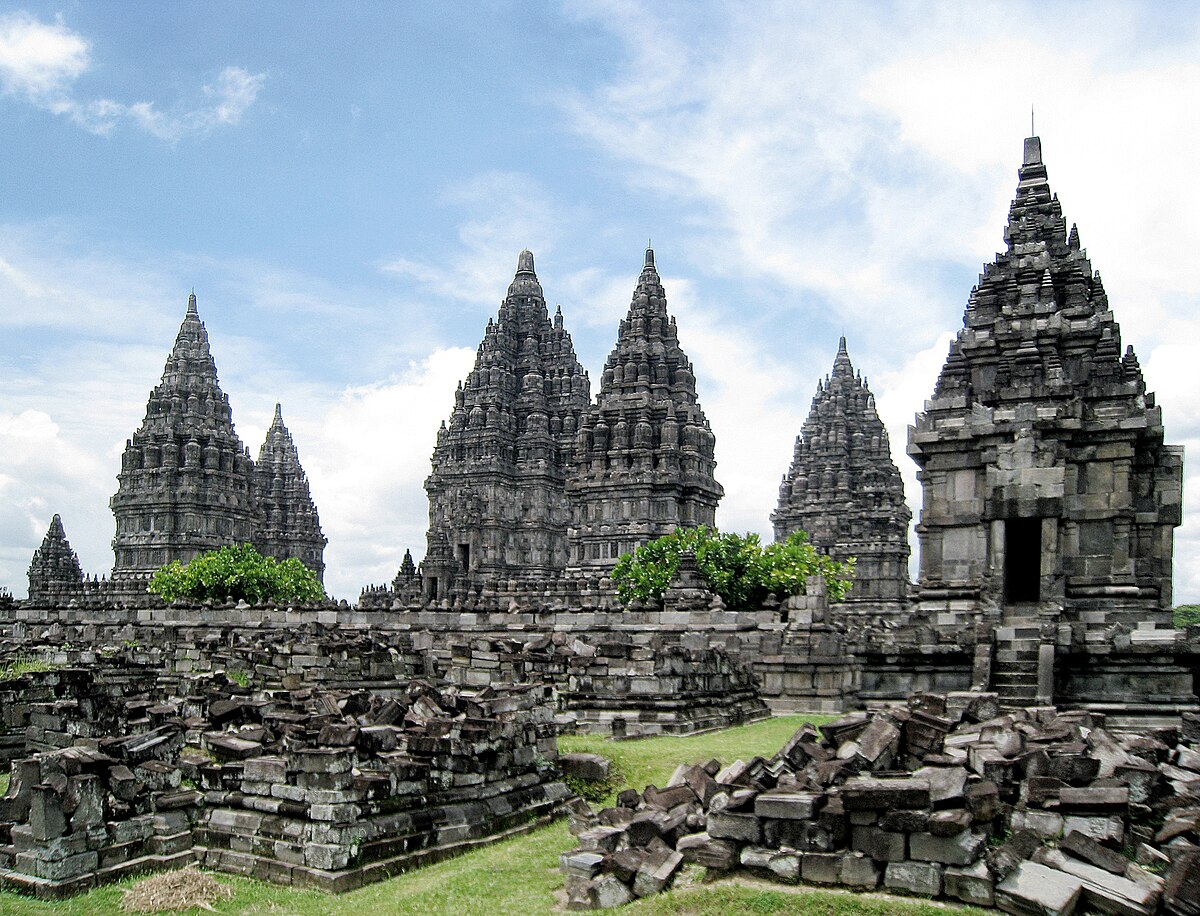A total of 5,000 Hindus from Central Java and Yogyakarta joined Tawur Kesanga ritual to commemorate Nyepi Holy Day at Prambanan Temple, Yogyakarta, on Friday, March 16. Since early morning, people flocked to the yard of Wisnu Mandala in Prambanan Temple Park (TWC) to conduct the ritual. “Tawur Agung Kesanga is a purification ceremony which is held one day before Nyepi Saka 1940,” said Committee Chairman of National Nyepi Laksda TNI I Nyoman Gede Ariawan.

By Tropenmuseum, part of the National Museum of World Cultures, CC BY-SA 3.0, Link (Ravan kidnapping Sita and fighting Jatayu)
The Prambanan temple compound, a UNESCO World Heritage Site, is the largest Hindu temple site in Indonesia, and one of the biggest in Southeast Asia. It is characterized by its tall and pointed architecture, typical of Hindu architecture, and by the towering 47-metre-high (154 ft) central building inside a large complex of individual temples.[2] Prambanan attracts many visitors from around the world.[3][4]
The Prambanan temple is the largest Hindu temple of ancient Java, and the first building was completed in the mid-9th century. It was likely started by Rakai Pikatan as the Hindu Sanjaya Dynasty’s answer to the Buddhist Sailendra Dynasty’s Borobudur and Sewu temples nearby. Historians suggest that the construction of Prambanan probably was meant to mark the return of the Hindu Sanjaya Dynasty to power in Central Java after almost a century of Buddhist Sailendra Dynasty domination. The construction of this massive Hindu temple signifies that the Medang court had shifted its patronage from Mahayana Buddhism to ShaiviteHinduism.
The temples collapsed during a major earthquake in the 16th century. Although the temple ceased to be an important center of worship, the ruins scattered around the area were still recognizable and known to the local Javanese people in later times. The statues and the ruins became the theme and the inspiration for the Loro Jonggrang folktale. After the division of Mataram Sultanate in 1755, the temple ruins and the Opak River were used to demarcate the boundary between Yogyakarta and Surakarta (Solo) Sultanates, which was adopted as the current border between Yogyakarta and the province of Central Java.

By Gunawan Kartapranata – Own work, CC BY-SA 3.0, Link
The temple attracted international attention early in the 19th century. In 1811 during British short-lived occupation of the Dutch East Indies, Colin Mackenzie, a surveyor in the service of Sir Thomas Stamford Raffles, came upon the temples by chance. Although Sir Thomas subsequently commissioned a full survey of the ruins, they remained neglected for decades. Dutch residents carried off sculptures as garden ornaments and native villagers used the foundation stones for construction material.
Half-hearted excavations by archaeologists in the 1880s facilitated looting. In 1918, the Dutch began reconstruction of the compound and proper restoration only in 1930. Efforts at restoration continue to this day. The reconstruction of the main Shiva temple was completed around 1953 and inaugurated by Sukarno. Since much of the original stonework has been stolen and reused at remote construction sites, restoration was hampered considerably. Given the scale of the temple complex, the government decided to rebuild shrines only if at least 75% of their original masonry was available. Most of the smaller shrines are now visible only in their foundations, with no plans for their reconstruction.

